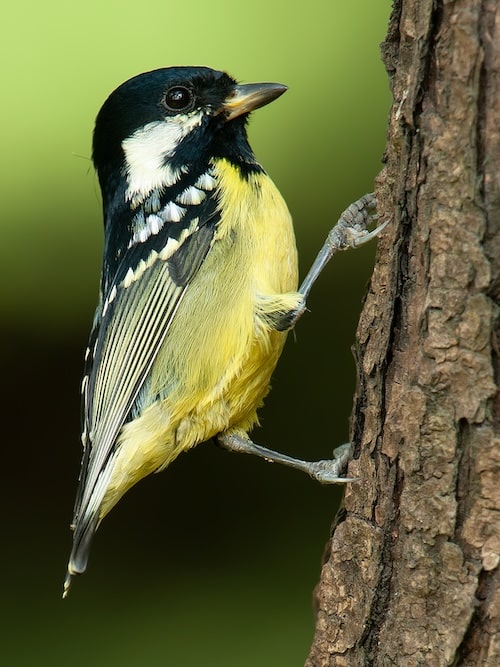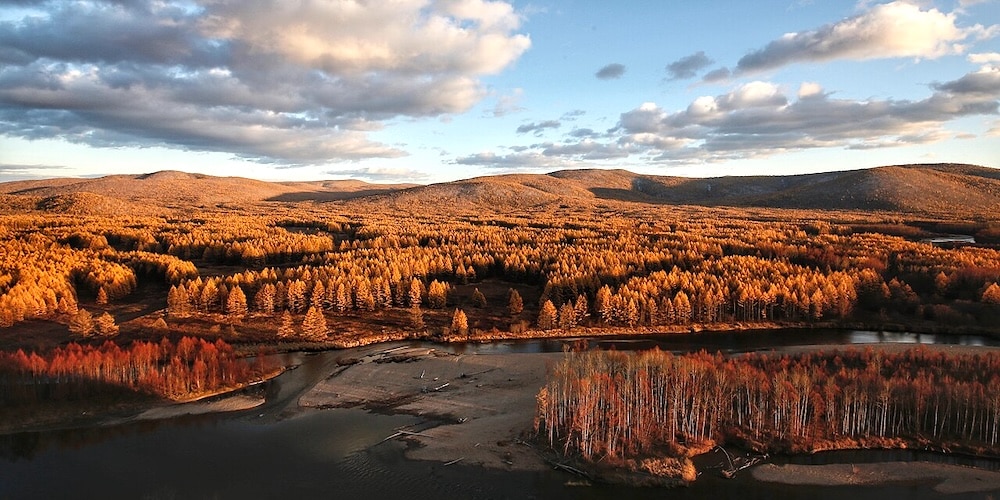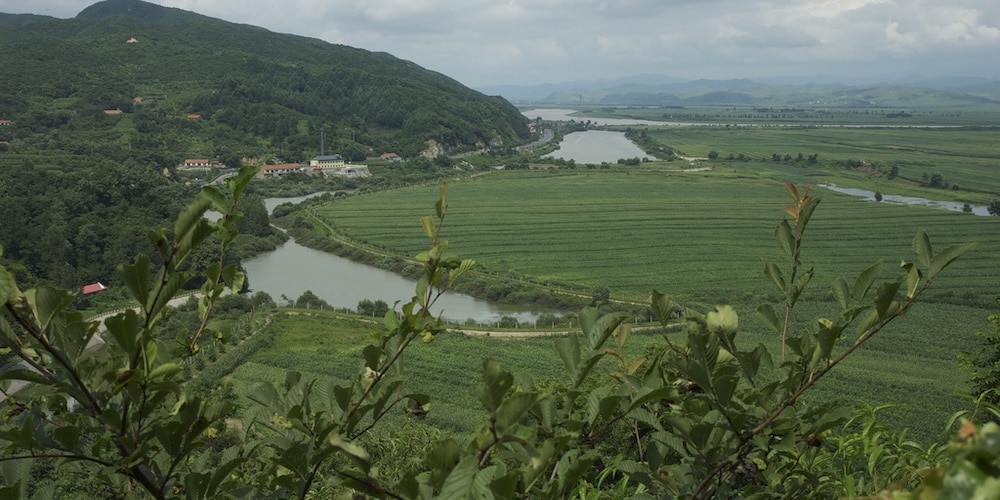Heilongjiang Province

Heilongjiang (literally Black Dragon River) is a province in northeast China. It is the northernmost and easternmost province of the country and contains China’s northernmost point and easternmost point at the confluence of the Amur and Ussuri rivers. The province is bordered by Jilin to the south and Inner Mongolia to the west. It also shares a border with Russia to the north and east. The capital and the largest city of the province is Harbin whose metropolitan area houses around ten million. The province’s other large cities include Qiqihar, Mudanjiang, Jiamusi, Daqing, Jixi, Shuangyashan, Hegang, Qitaihe, Yichun, and Heihe. Among Chinese provincial-level administrative divisions, Heilongjiang is the sixth-largest by total area covering 454,800 km2 (175,600 square miles) the 20th-most populous with around 32 million people, and the second-poorest by GDP per capita after only Gansu province. The province takes its name from the Amur river which marks the border between the People’s Republic of China and Russia. It has significant agricultural production and raw materials, such as timber, oil, and coal.
Heilongjiang is a land of varied topographies. Much of the province is dominated by mountain ranges such as the Greater Khingan Range and Lesser Khingan Range, Zhangguangcai Mountains, Laoye Mountains, and Wanda Mountains. The highest peak is Datudingzi Mountain at 5,540 feet, located on the border with Jilin province. The Greater Khingan Range contains China’s largest remaining virgin forest and is an important area for China’s forestry industry. The east and southwest of the province, which are relatively flat and low in altitude, feature the Muling River, the Naoli River, the Songhua River, the Nen River, and the Mudan River, all tributaries of the Amur, while the northern border forms part of the Amur valley. Xingkai Lake (aka Khanka Lake) is found on the border with Russia’s Primorsky Krai.

Forest in Greater Khingan Mountains – ©Charlie Fong CC BY-SA 4.0 via Wikimedia Commons
A humid continental climate predominates in the province, though areas in the far north are subarctic. Winters are long and bitter, with an average of −31 to −15 °C in January, and summers are short and warm to very warm with an average of 18 to 23 °C in July. The annual average rainfall is 16 to 28 inches, concentrated heavily in summer. Clear weather is prevalent throughout the year, and in the spring, the Songnen Plain and the Sanjiang Plain provide abundant sources of wind energy.

Yalu River & Sanjiang Plain – ©Brandon Howard CC BY 2.0 via Wikimedia Commons
Heilongjiang has vast tracts of black soil (chernozem), one of the most fertile soil types. It is home to China’s largest plantations of rice, corn and soybeans, with a total of 14.37 million ha of grain plantation area, including 4 million ha of rice plantation and 5.5 million ha of corn. Commercial crops grown also include beets, flax and sunflowers. It is also an important source of lumber for China. Pine, especially the Korean pine and larch are the most important forms. Herding in Heilongjiang is cantered upon horses and cattle; the province has the largest number of milk cows and the highest production of milk among all the province-level divisions of China.
Birding Heilongjiang
Forests are mostly found in the Greater Khingan Mountains and Lesser Khingan Mountains, which are also home to protected animal species such as the Siberian tiger, red-crowned crane, and lynx. These areas are also often the best places for birds as remnants of the ancient Manchurian forest that once stretched unbroken across the region, hold northern species absent further south in China. Spring can be alive with birdsong from Siberian Blue Robins, Blue-and-white Flycatchers, White-throated Rock Thrush, Siberian Thrush and more. However, while farmland predominates the lowlands, it does have its own avifauna such as Amur Falcons hunting over cornfields to Common Kingfishers making use of paddy fields and irrigation channels. Birding eastern Heilongjiang in May and June, at the height of breeding season, some excellent species are present. Band-bellied Crake and Mandarin Duck are present and as well as secretive species such as Rufous Hawk-Cuckoo and Gray’s Grasshopper Warbler. Both Eurasian Eagle-Owl and Ural Owl breed here too. There are still Chinese Merganser on the Hailang River. Other local breeders are Eastern Crowned Warbler, Radde’s Warbler, and White-throated Rock Thrush.

Zhalong Nature Reserve – ©Huanokinhejo CC BY-SA 4.0 via Wikimedia Commons
Zhalong Nature Reserve is good for Swan Goose and White-naped Crane. Woodland can hold Tristram’s Bunting, Lanceolated Warbler, Pale-legged Leaf Warbler and Oriental Cuckoo. Wetland may hold Falcated and Spot-billed Duck. Corvid species include Daurian Jackdaw and Azure-winged Magpie. The list goes on including a number of woodpeckers, flycatchers, chats, Warblers and buntings.
-
Wikipedia
GNU Free Documentation License
https://en.wikipedia.org/wiki/Heilongjiang
-
Number of bird species: 402
(As at April 2025)
Number of endemics: 1
Yellow-bellied Tit Periparus venustulusAlso one breeding endemic Manchurian Reed Warbler Acrocephalus tangorum
-
Avibase
PDF ChecklistThis checklist includes all bird species found in Heilongjiang , based on the best information available at this time. It is based on a wide variety of sources that I collated over many years. I am pleased to offer these checklists as a service to birdwatchers. If you find any error, please do not hesitate to report them. -
E-Bird
PDF ChecklistThis checklist is generated with data from eBird (ebird.org), a global database of bird sightings from birders like you. If you enjoy this checklist, please consider contributing your sightings to eBird. It is 100% free to take part, and your observations will help support birders, researchers, and conservationists worldwide.
-
Birds of China
| By Liu Yang & Chen Shuihua | Princeton University Press | 2023 | Flexibound | 672 pages, plates with 4000 colour illustrations, colour distribution maps | ISBN: 9780691237527 Buy this book from NHBS.com -
Guide to the Birds of China
| By John MacKinnon | OUP | 2022 | Edition 2 | Paperback | 513 pages, 164 plates with colour illustrations; colour distribution maps | ISBN: 9780192893673 Buy this book from NHBS.com
-
NNR Fenglin
WebpageSatellite ViewThe forest belongs to the vegetation zone with coniferous and broad-leaved mixed forests. It belongs to the Lesser Hinggan Mountains and varies from 280 meters to over 683 meters above the sea level… -
NNR Honghe
InformationSatellite View173 birds are known from the Reserve including protected species such as black stork, black-billed capercaillie, greater spotted eagle, Steller's sea eagle, mandarin duck, Oriental white stork, red-crowned crane, white-naped crane, white-tailed sea eagle, and whooper swan. -
NNR San Jiang
WebpageSatellite ViewAn alluvial floodplain typical of high-altitude wetlands, a mixture of rivers, open bogs, seasonally flooded meadows, and sedge marshes, the largest area of freshwater wetland in the country. The site is internationally important for waterbirds, particularly ducks… -
NNR Xiao Xingkai Lake
InformationSatellite ViewA complex wetland system including grassland, marshes, lakes, and forests, contiguous with Russia to the south across the Songacha River. The site, at the northern end of the large lake, provides important breeding habitat for a number of bird species protected in China… -
NR Zhalong
InformationSatellite ViewA system of permanent and seasonally flooded freshwater marshes, shallow lakes and ponds, with extensive reedbeds and grasslands. Its ponds and reeds make it an ideal home for over 300 different species of birds. It is protected by the Chinese government. Within the park, a large flock of red-crowned cranes is held in captivity for conservation purposes. The reserve is listed as a Ramsar Wetland of International Importance...NR
-
eBird
SightingseBirding This Year
-
Shanghai Birding
Local Tour OperatorJoin Us on a Birding Trip to the Lesser Khingan Mountains
-
2016 [06 June] - Craig Brelsford & Elaine Du - Boli County,
ReportIn this report, you will get an introduction to Boli and eastern Heilongjiang, you will discover the birds we met up there at the height of the breeding season, you will learn about the birds we missed, and you will find out how Elaine and I combine birding with family. There are as well 31 of my sound-recordings of Boli birds and plenty of photos. -
2024 [05 May] - Craig Brelsford
Reportirding the Lesser Khingan Mountains of Heilongjiang



